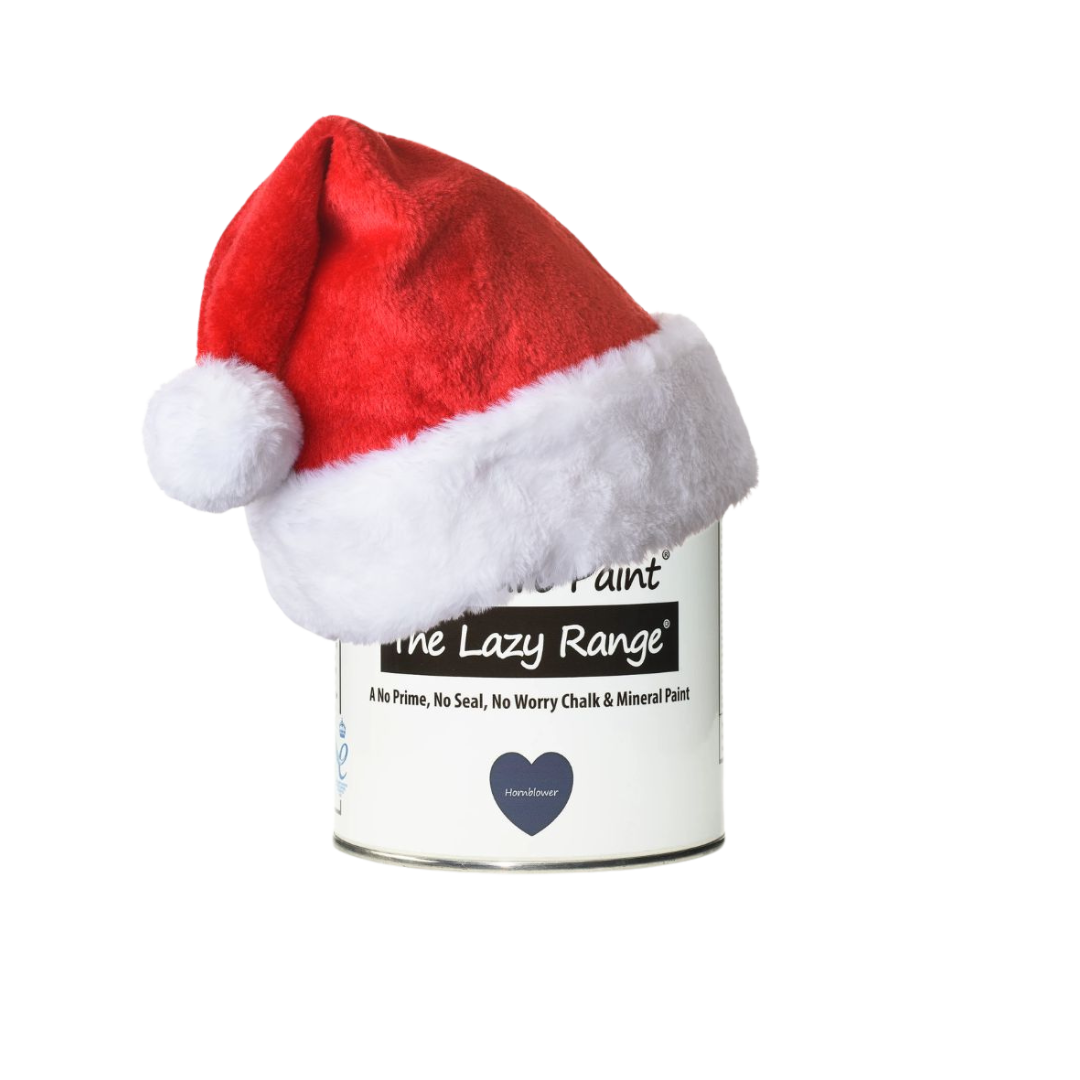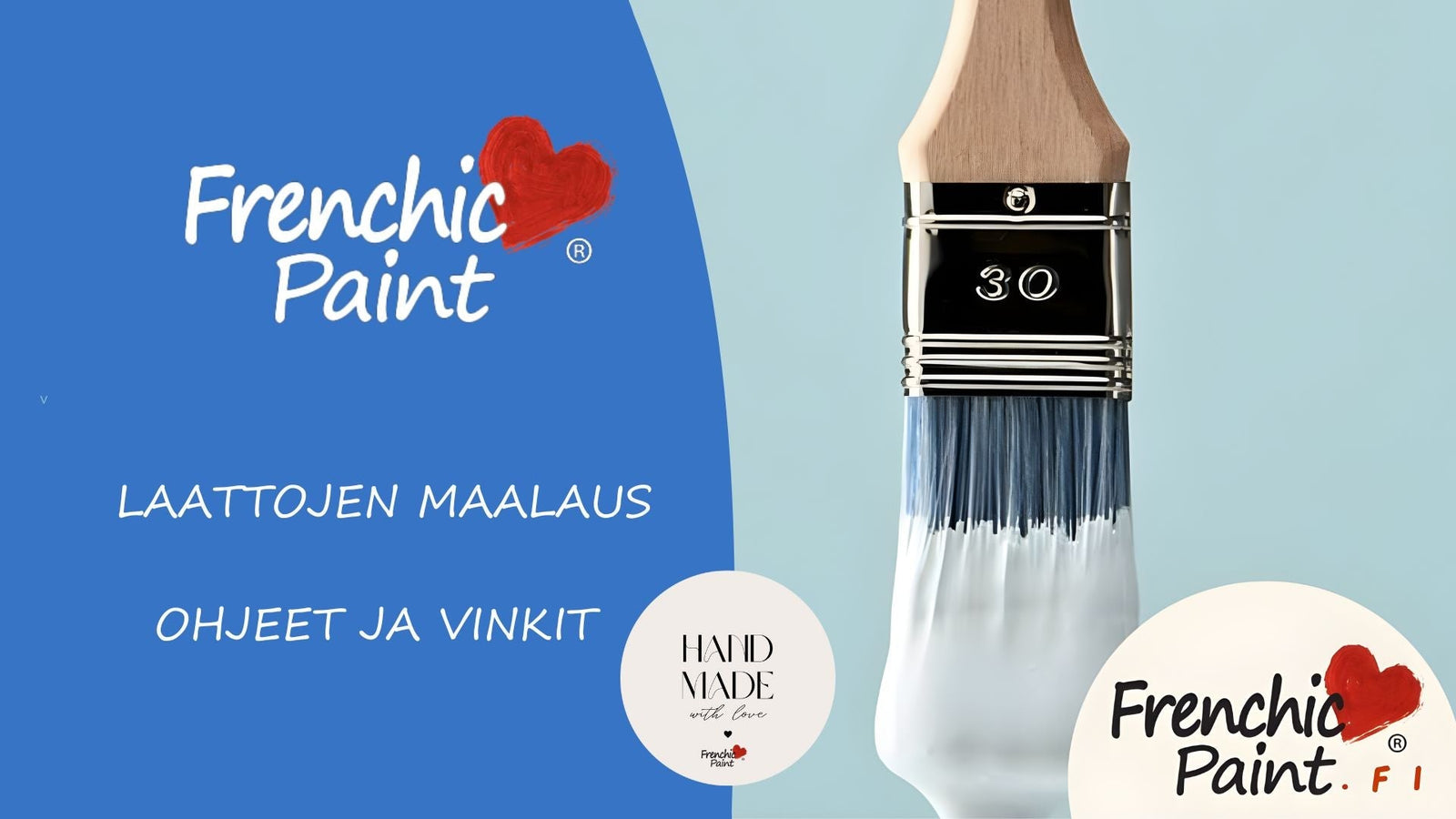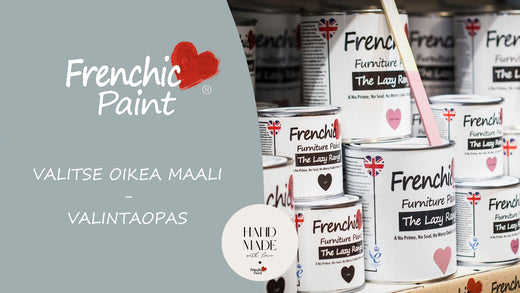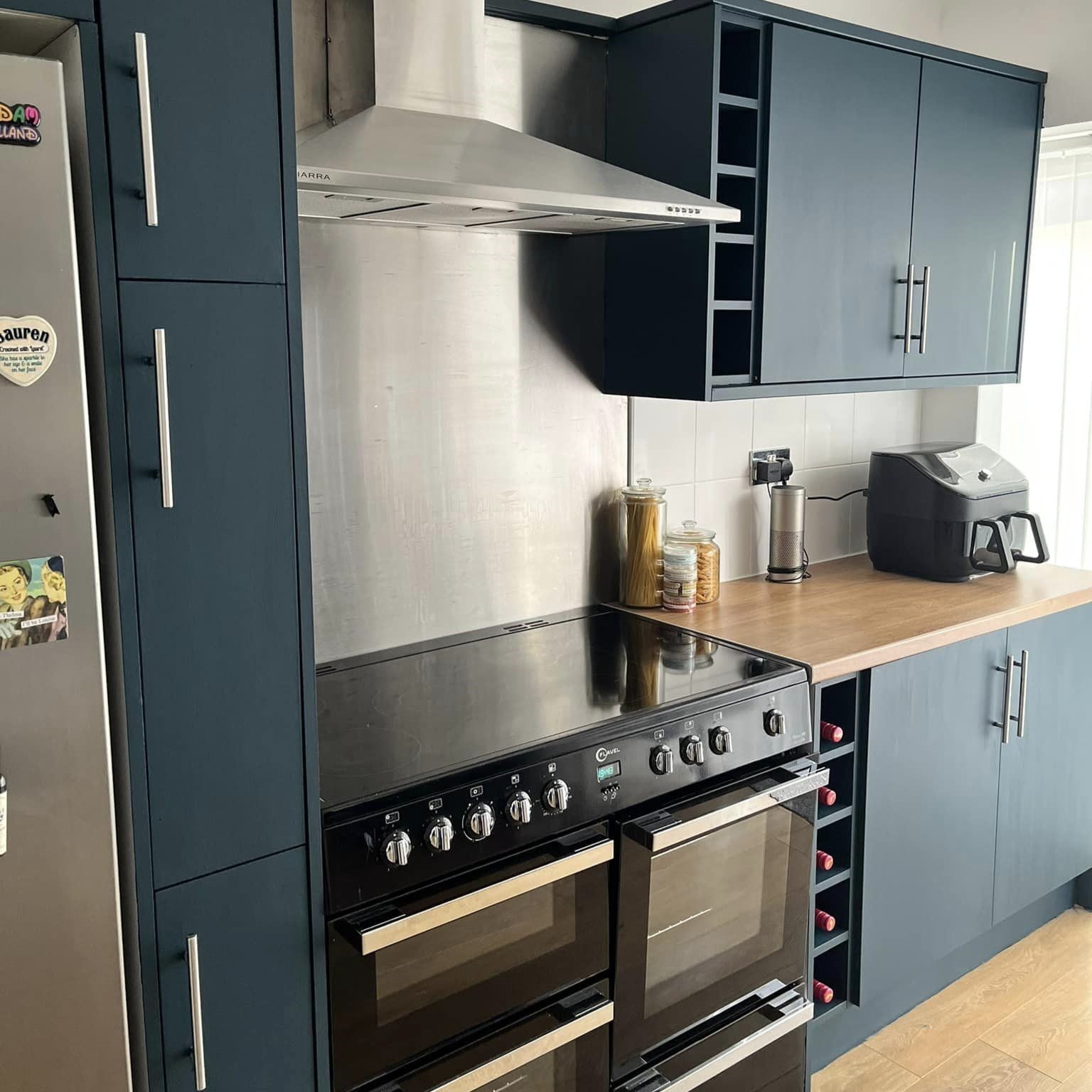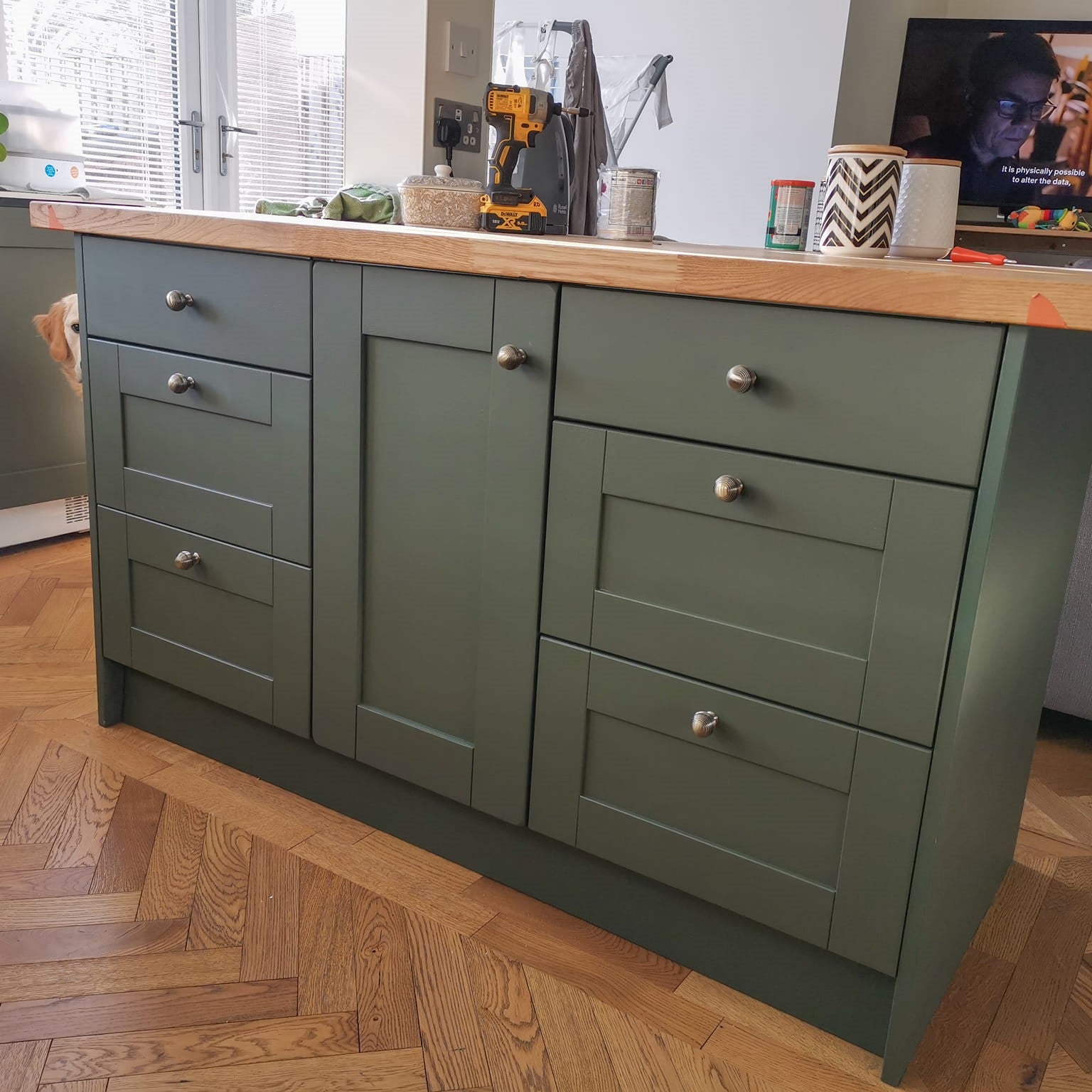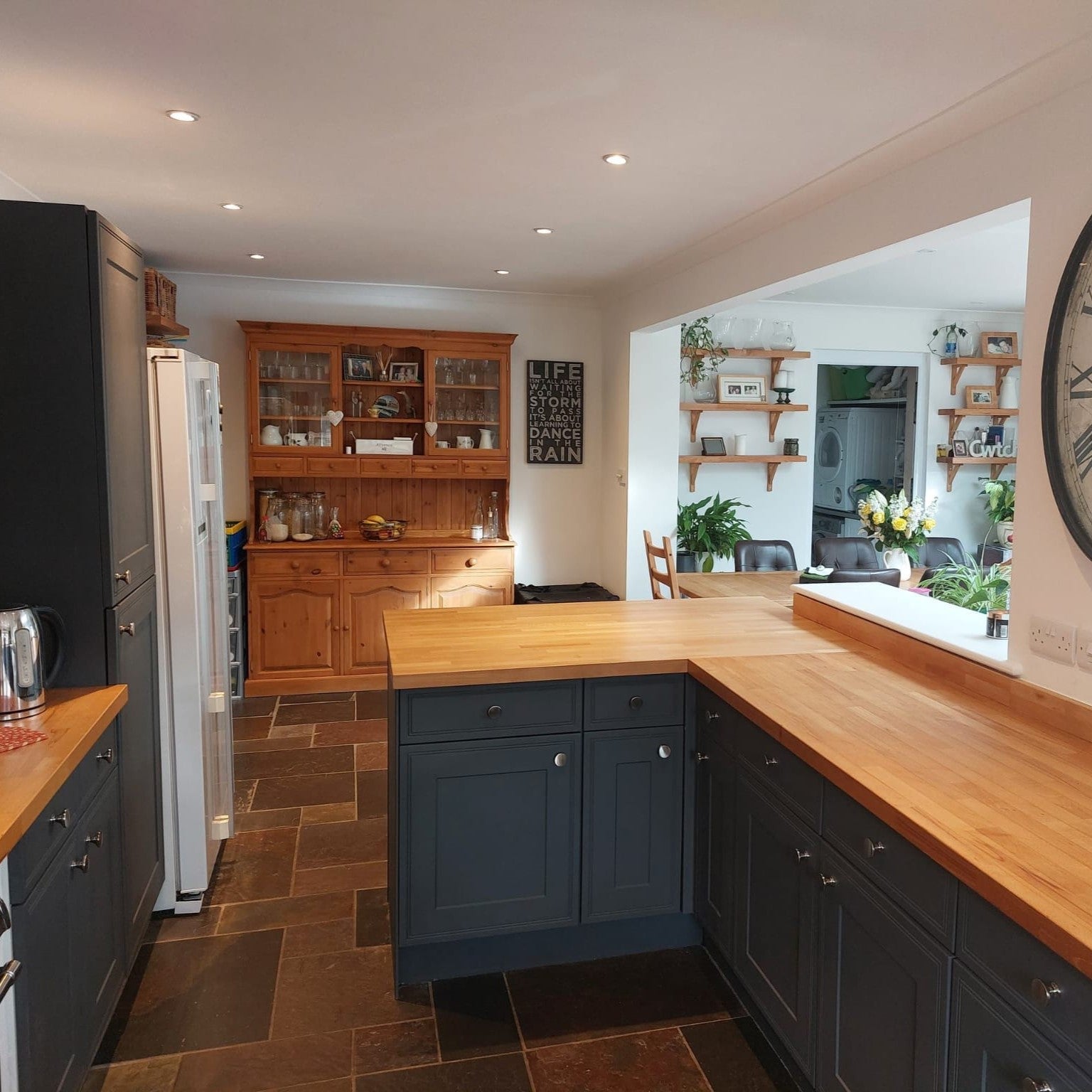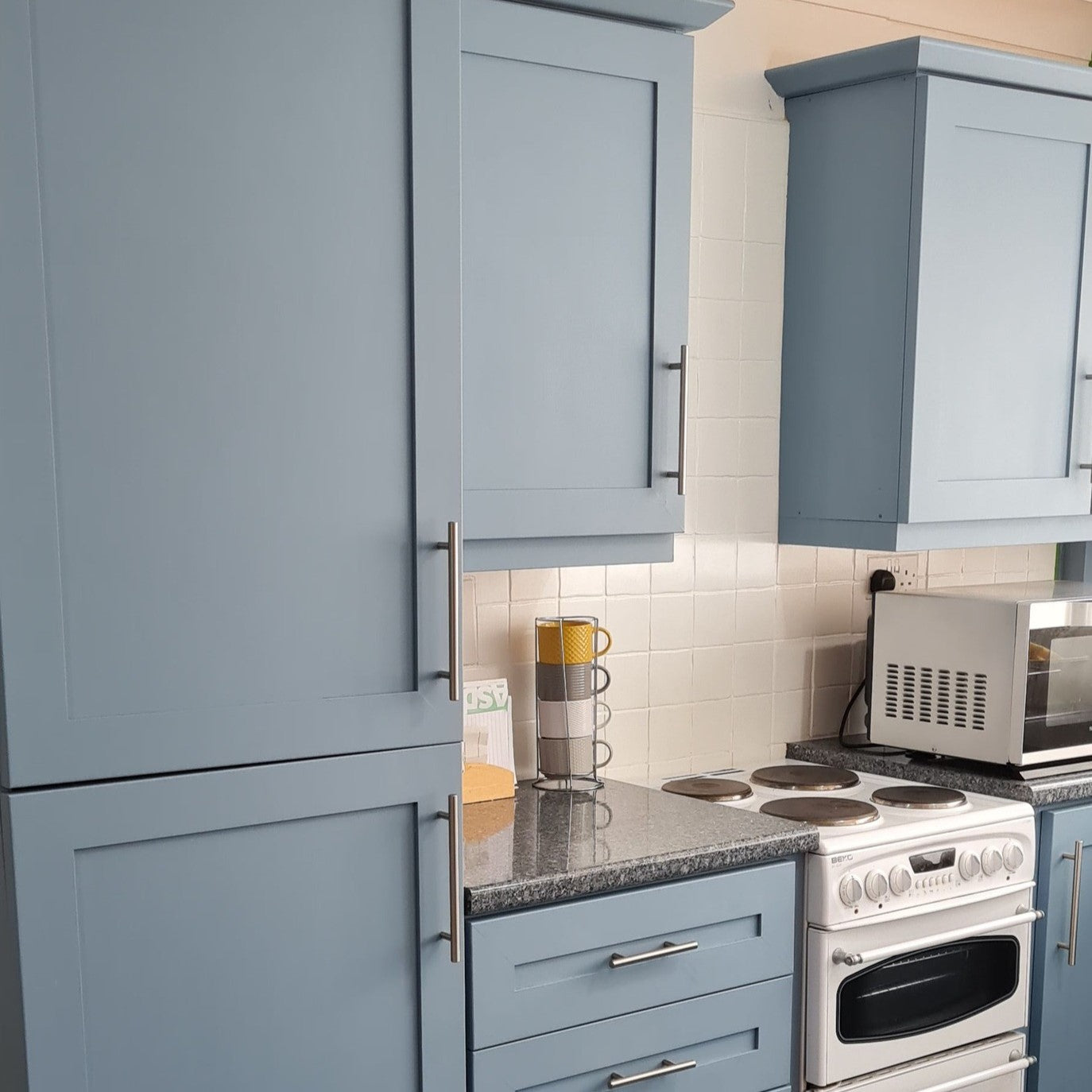How to paint ceramic tiles

Can you paint tiles with Frenchic paint?
Yes, most ceramic wall tiles can be painted. Exceptions are floor tiles and areas exposed to standing water or hot steam, such as saunas and stove backsplashes.
Ceramic tiles can be painted with Al Fresco and Seinämaali series paints. See video tips at the end of the blog.
However, consider your own usage habits and the area's wear. Painting tiles is an easy and affordable way to refresh the look, but maintenance needs should be taken into account in advance.
It's easier than you think – just follow our instructions
The tiles in the image below are painted with the dark gray Smudge shade (Al Fresco series). To protect the paint surface from hot steam, a clear glass panel has been installed in the background.

Image: tiles Smudge, Al Fresco. Cabinets: Swankypants, Al Fresco.
Ceramic tiles – a durable and popular surface material
Tiles provide a water-resistant surface for kitchens and bathrooms. Over time, colors and patterns may feel outdated – painting is an easy way to update the style.
Why paint tiles?
Often the reason is appearance. Old tiles can be worn or outdated in color. Painting offers a fresh and affordable alternative to replacing tiles.
Removing tiles is laborious and expensive. Painting can save both time and money and easily achieve a new look.

How to paint ceramic tiles
- Clean the surface thoroughly and rinse off the detergent residue.
- Lightly sand and wipe off the dust.
- Paint at least twice. Let the first coat dry for about 2 hours before applying the second coat.
- Handle the surface carefully for 2–3 weeks until the paint is fully cured.
Cleaning: Use a mild detergent. Avoid abrasive tools, steam cleaning, and strong chemicals.
Choose the right paint – Al Fresco or Wall Paint
Tiles can be painted either with the Wall Paint series or with the Al Fresco series paints.
- The wall paint has an ultra-matte finish.
- Al Fresco is semi-matte and available in smaller containers (250–750 ml).
Surface preparation is an important step
Preparation is crucial for a successful result. Clean, dry, and lightly roughen the surface before painting. Replace old silicone joints with new ones if necessary.
Rinse all detergents thoroughly – detergent residue prevents paint adhesion. Use products from only one manufacturer for the entire project.
Aftercare of painted tiles
Allow the painted surface to harden for about three weeks before normal use. Do not wet the surface during the first week. Clean gently thereafter and avoid scrubbing.
Inspiration for painting tiles
The Al Fresco and Chalk Wall Paint ranges have plenty of colors. You can choose, for example, modern gray, bold green, or classic white. Alternating colors or metallic shimmer joints also add visual impact.

Image: Copper-toned Frensheen in tile joints.
Washing and preparation before painting
Clean surfaces from mold, dirt, and grease with Frenchic Sugar Soap detergent and rinse well.
Silicone joints and seals
Do not paint silicone joints – replace them with new ones. Lightly sand the tile so the paint adheres. Use quality tape for masking.
Paint lightly with a brush or roller
A small roller is suitable for large surfaces and a brush for corners. Stir the paint well before use. Read tips for choosing a brush.
Take care of the painted surface gently
Use mild detergents and avoid scrubbing and steam cleaning. Scratches can be repaired with maintenance painting.
Allow time for the project and do a test paint
Let the paint dry calmly for 48 hours before light use and handle carefully for about three weeks. Test the shade in advance with a sample pot.
Where Al Fresco and Chalk Wall Paint are not suitable
Paints are not recommended for areas with standing water (bathtubs, showers, sinks, saunas), places exposed to high heat or moisture, or floor tiles. Paints do not function as waterproofing.
Painting floor tiles – at your own risk
Officially, painting floor tiles is not recommended, but customers have succeeded in spaces with light wear. Always assess the use and wear of the site.
- Watch the video with Finnish subtitles about preparations.
- Be careful when opening the can lid – we recommend using the Frenchic paint can opener.
- Stir the paint thoroughly from the bottom with a wide tool before and during the painting project.
Painting, paint drying, and curing
- Avoid painting in direct, hot sunlight.
- The best painting conditions are when the air and surface temperature are 10–32 °C and humidity is below 85%.
- Avoid painting outdoors if rain, frost, fog, or moisture condensation is expected within the next 48 hours, or if the temperature may drop below 10 degrees.
- Especially wooden surfaces can retain moisture for up to 48 hours after rain or washing.
- Ensure that the surface to be painted is completely dry before painting.
- Only paint outdoor furniture that you can store protected from the weather during winter. Read on our blog how to succeed in outdoor painting.
- Use only clean and high-quality tools for painting, such as a brush or roller.
- Also suitable for spray painting – thin with up to 10–15% clean water depending on the equipment.
- Allow the paint to level out calmly and let the "Self Levelling" feature work – avoid excessive working of the paint.
- There must be at least 2 hours between coats, even if the paint feels dry to the touch.
- The paint surface reaches its final hardness in 2–3 weeks under normal conditions. Handle surfaces carefully until curing is complete.
- Avoid scratching and walking on the freshly painted floor for at least 4 hours. Walk barefoot for the next 7 days and keep pets off the surface. Do not wet the surface during the first week and handle it carefully for about three weeks. Use mild detergents and non-scratching cleaning tools thereafter.
Storage and cleaning
- Close the paint can tightly after use.
- Protect the paint can outdoors from needles, pollen, and debris while painting.
- Clean splashes immediately with warm water.
- Wash brushes in warm soapy water immediately after use.
- Do not store paint cans in damp, hot, or frost-exposed places.
Instructions for choosing a shade
- We strive for as accurate color reproduction as possible on our website, but shades may vary depending on device settings, lighting, and surface texture. The best way to choose a shade is to visit a Frenchic retailer or order a 250 ml sample can and try the paint at home.
-
- Reserve enough paint for the entire project. If you use multiple cans, ensure they are from the same batch number or mix the contents together before painting.
- One thin coat or thinned paint may reduce durability.
- Porous and uneven surfaces (e.g., MDF, fiberglass wallpaper, woven surface, raw board) consume more paint. All Frenchic paints are applied at least twice.
- Examine the shade only when dry after two coats. The color impression changes depending on lighting and adjacent shades, as well as different surfaces (horizontal vs. vertical).
- Coverage, color accuracy, and yield are also affected by paint mixing and the base color shade.
